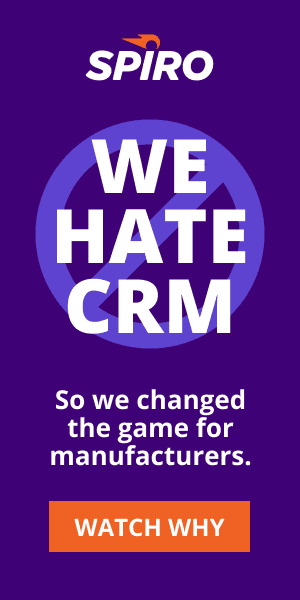How To Get Away With Sandbagging
I once worked for a guy who was practically obsessed with preventing “sandbagging sales”, and no that’s not some strange intimate act… To be fair, the product we were selling was perishable and our forecast needed to be accurate to make sure we had the right amount of supply to fit the demand. (Of course back in the day we didn’t have an AI-Powered CRM like Spiro to help us with our forecasting.)
To be less fair — he was an idiot: pushing the sales team to be “truthful” to the point where they could never live up to the expectations that he forced them into setting. Let me explain.
What is Sandbagging Sales?
Originally a ‘sandbagger’ was someone who would sneak up to someone and hit them, literally, with a sandbag. This was considered an underhanded move in the 1880’s, mostly because people weren’t aware of drive-by-shootings or Al Qaida.
In the sales world, sandbagging sales is holding back and fooling your sales manager into thinking that your forecast is actually worse than it is. In this case, it is actually a good thing. You’re filling your sandbags with deals and may unexpectedly surprise your manager with more closes at the end of the month than they are expecting.
Why Should You Sandbag?
As you become a master of your craft, whether a salesman or a weather forecaster, you begin to learn the tricks of the trade. Nate Silver points out in his blog Why Forecasters are Role Models, that weather forecasters are of the most successful of all forecasters at making predictions because they use a combination of computer predictions and human discretion from experience.
What does this mean to you? As you close deal after deal, there will be signs that you learn to spot which generally mean a deal is going to close, or it’s not. Once you begin to get a feel for a cold, warm or hot lead, and how long they typically take to close, you can more accurately predict what your end results will be.
Sandbagging sales is basically under promising, within reason, so that you can over deliver. By understanding which deals are less likely to close, and not reporting them, you put yourself in a position to pleasantly surprise your manager if they do close. Better yet, you will not disappoint them if they do not, as you knew they were higher risk.
How to Sandbag
So when you are taking the “sandbagging sales” approach to forecasting, there are three numbers all salsepeople need to know:
- Probability of Closing (how likely are they to close)
- Amounts (the revenue amount of a deal)
- Close dates (when they’re going to close)
For example, say you have a deal that may range from $5,000 to $10,000 in revenue and may close this month if things move along quickly. You would forecast the worst case scenario of earning $5,000 and closing the following month.
The tendency of salespeople is to be overly optimistic, so in sandbagging, you try to be as conservative as you possibly can be — without being ridiculous of course. You want to low ball these figures.
Whatever you do, don’t skip entering opportunities into your CRM system altogether. Then you’ll surely look like a fool if they close! Simply add them, but discount the likelihood of them working out in the best case scenario.
By sandbagging sales, you are not being dishonest, but rather considering the fact that shit does happen. Faxes don’t go through, customers get tied up with other things, and people decide that they want to go with your cheapest option. Luckily, sometimes things do go in your favor (especially if you are using an app like Spiro), but you’re in a better position to assume the worst and be pleasantly surprised. You can even sandbag yourself by looking at the conservative side of your leads and pushing yourself to meet your goal considering worst case scenario.
Want to give this a try? Be open about it 🙂 — it’s OK to tell your sales manager what you’re doing, as long as you do it in good humor. After all she has a number to hit as well and is probably sandbagging her boss!

